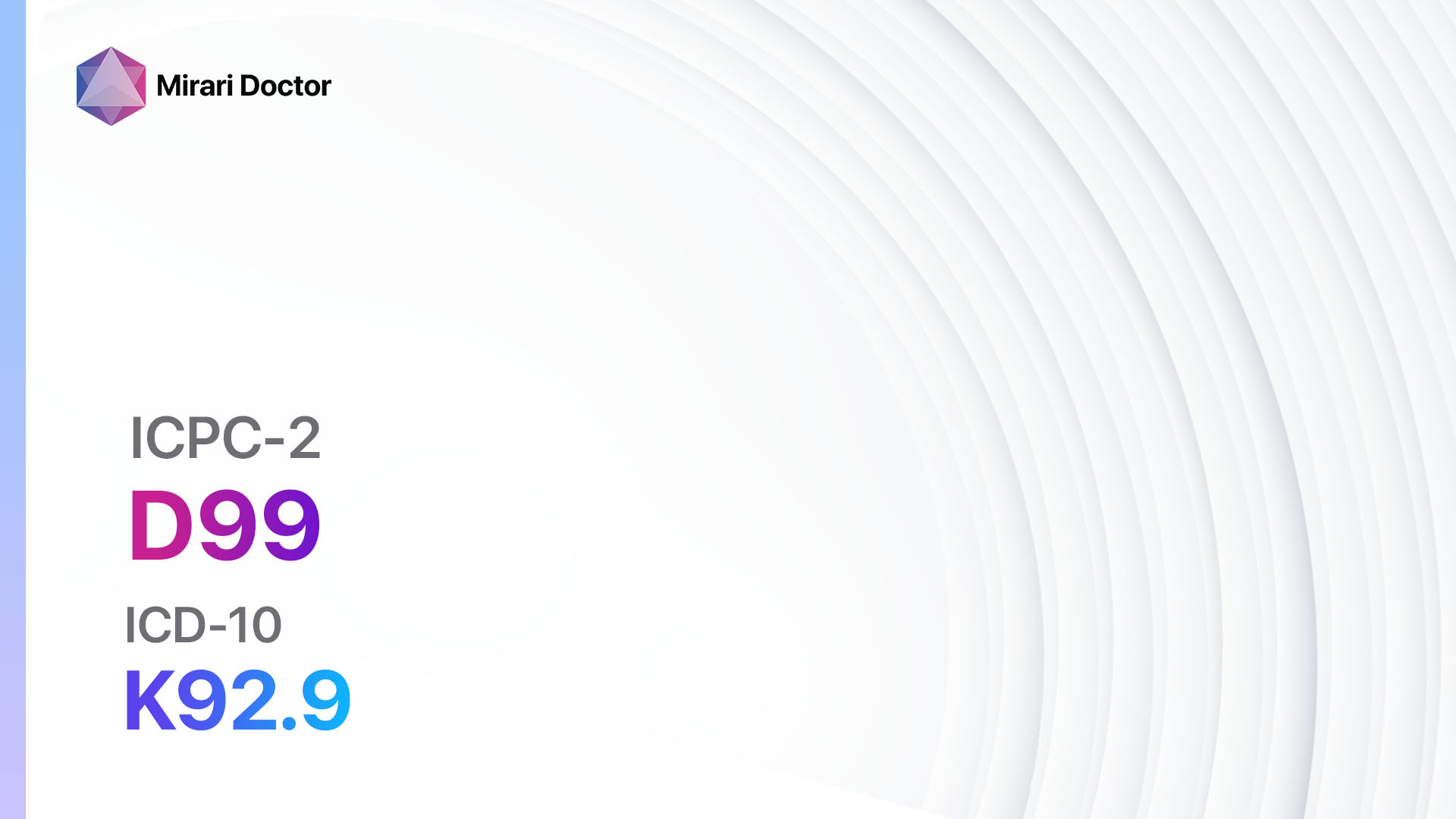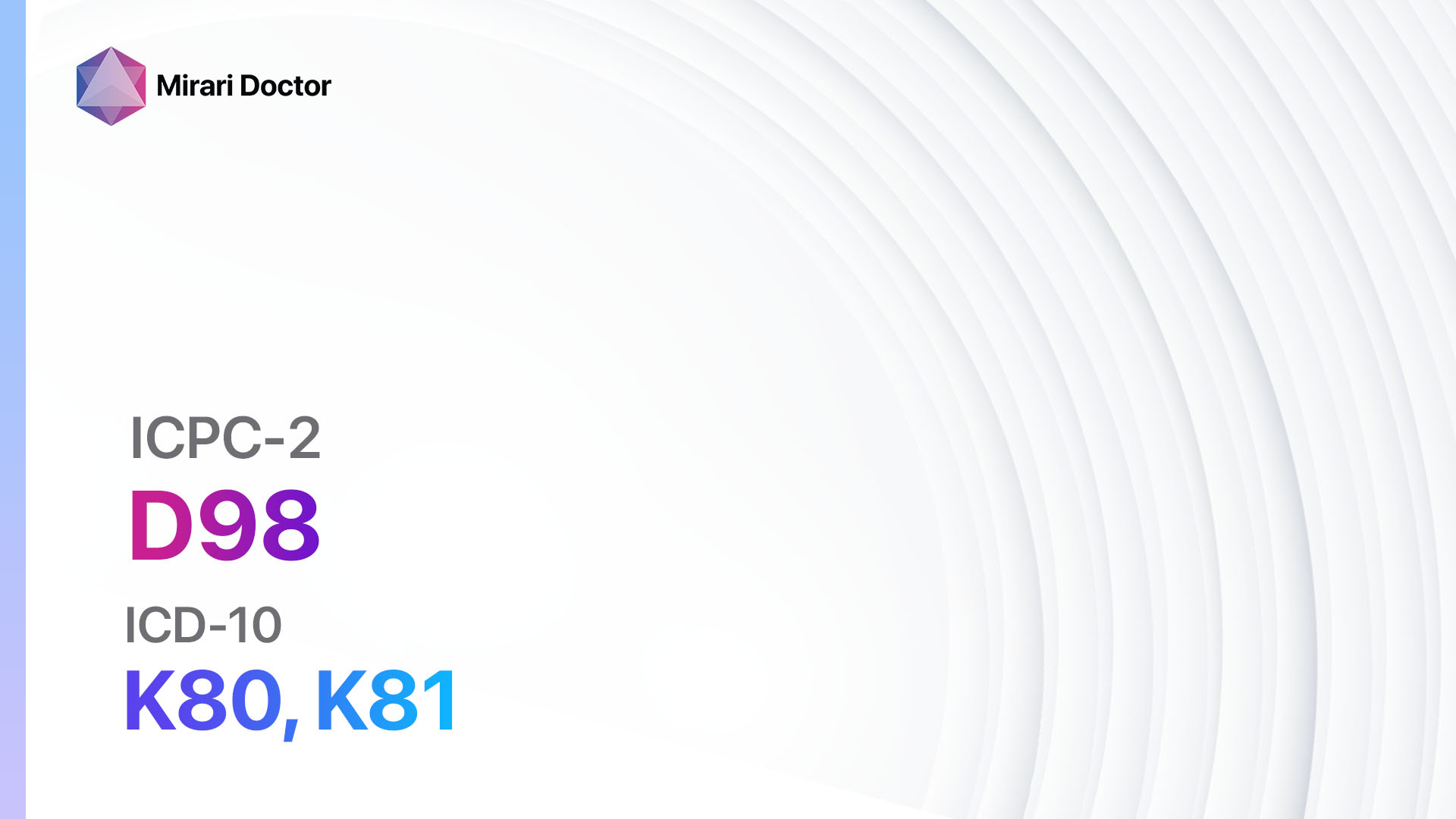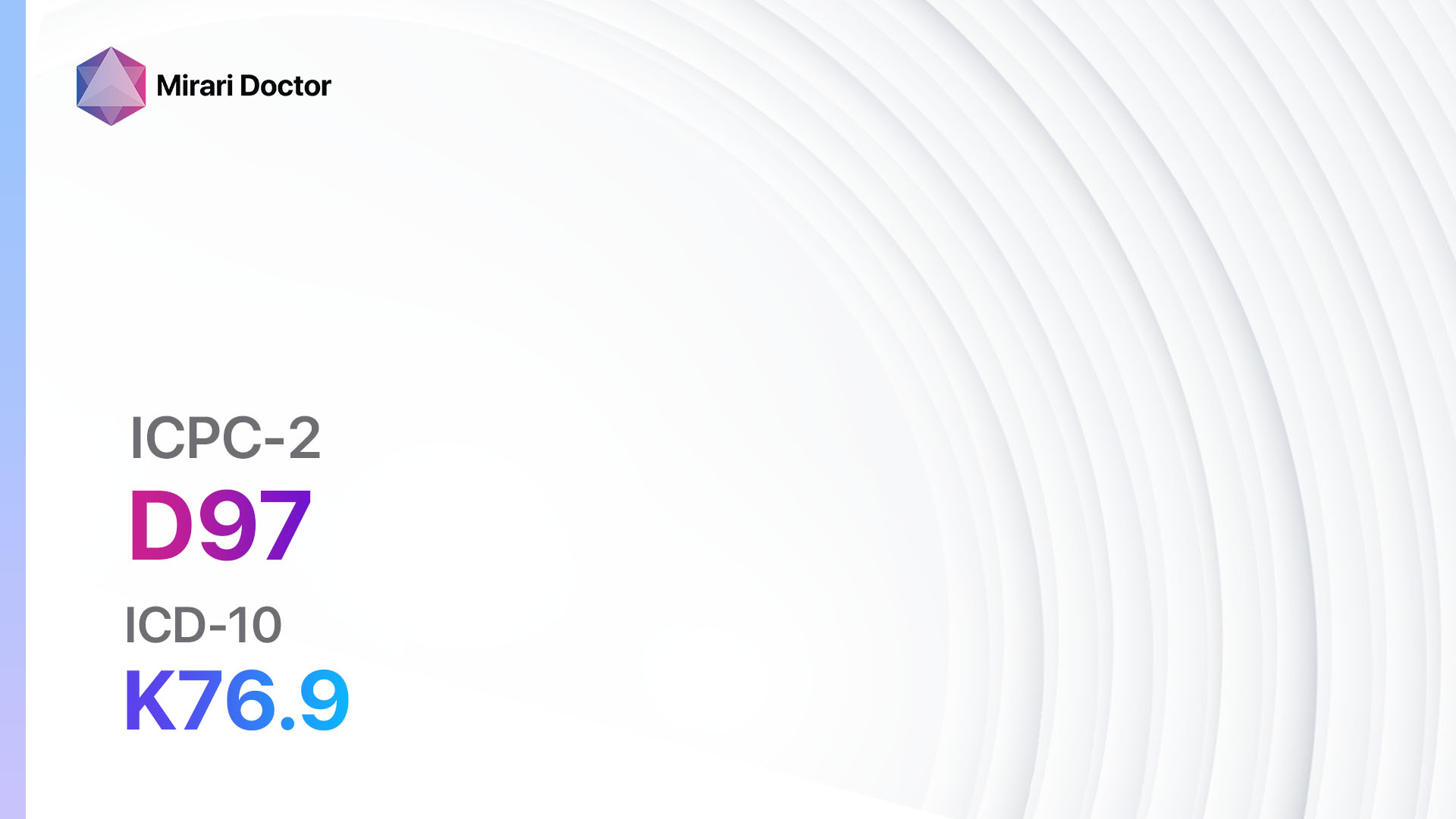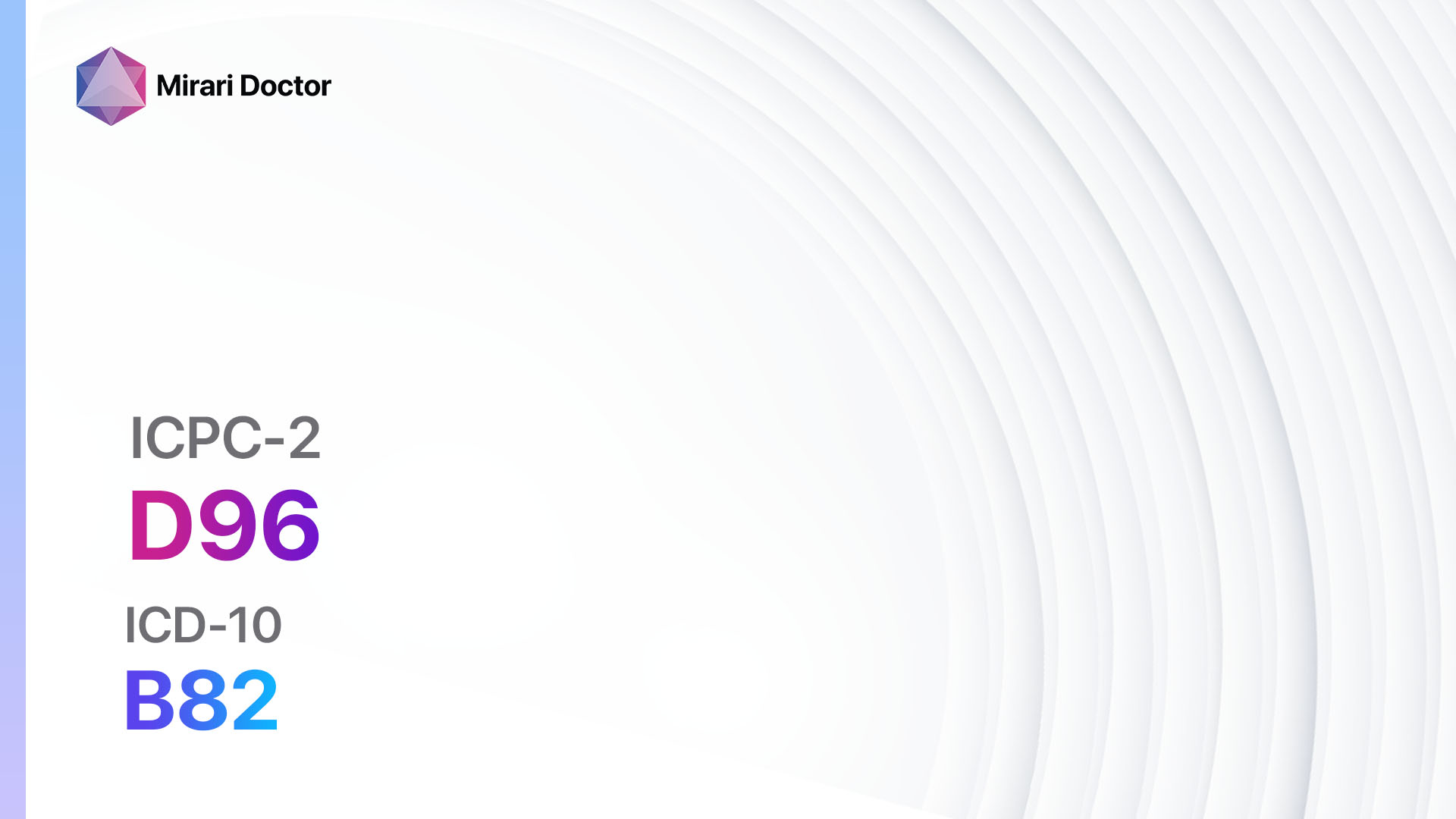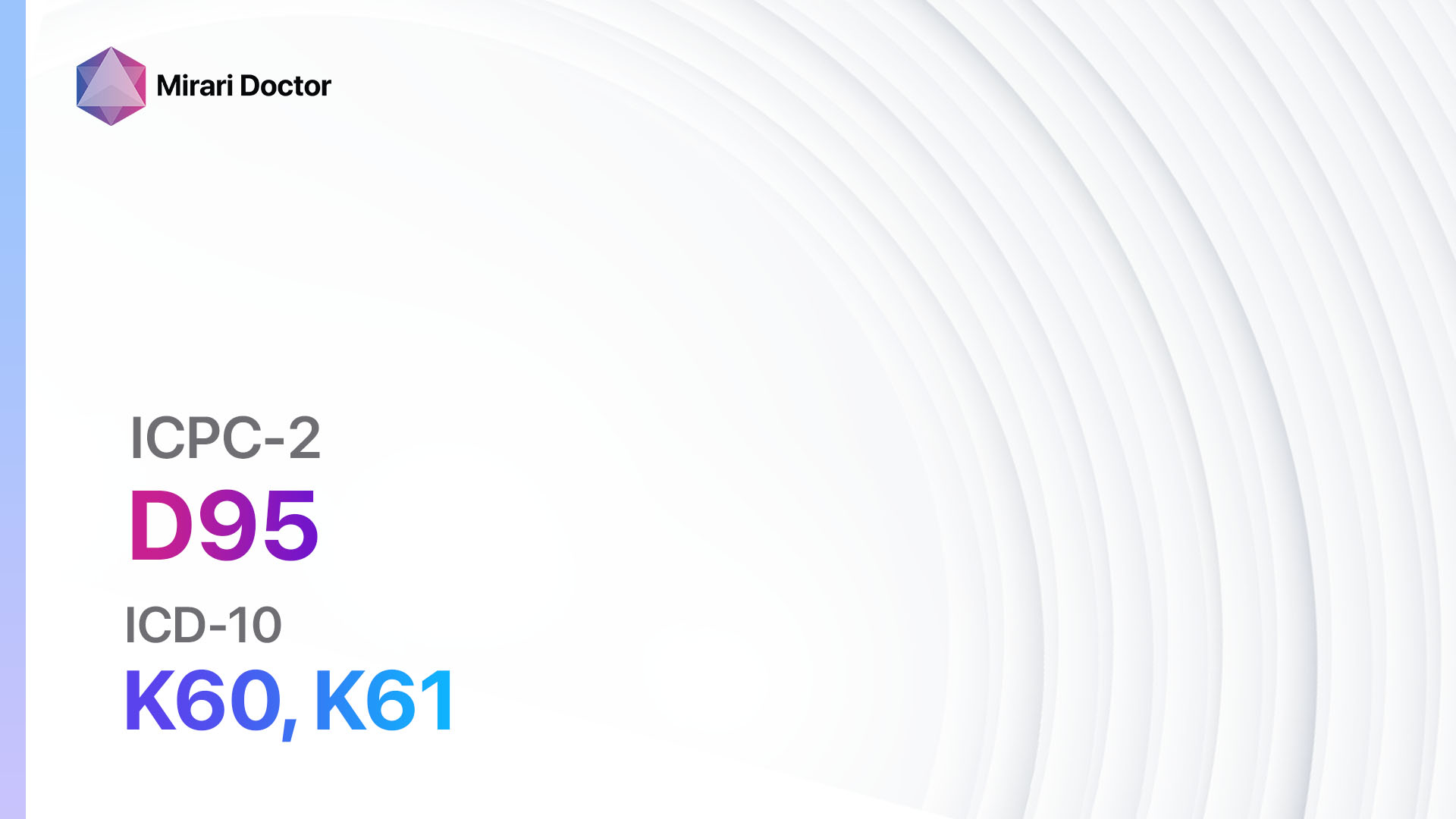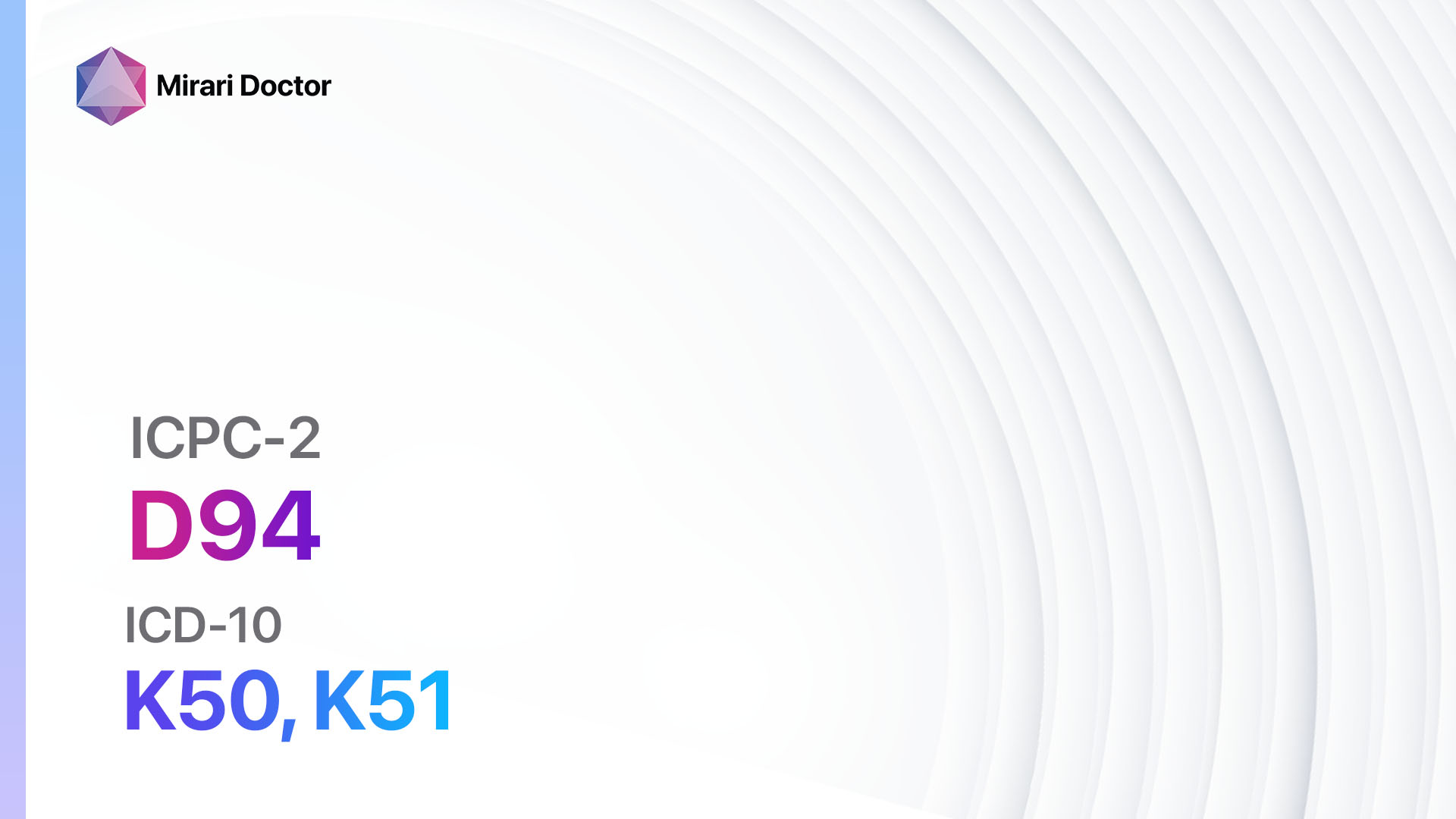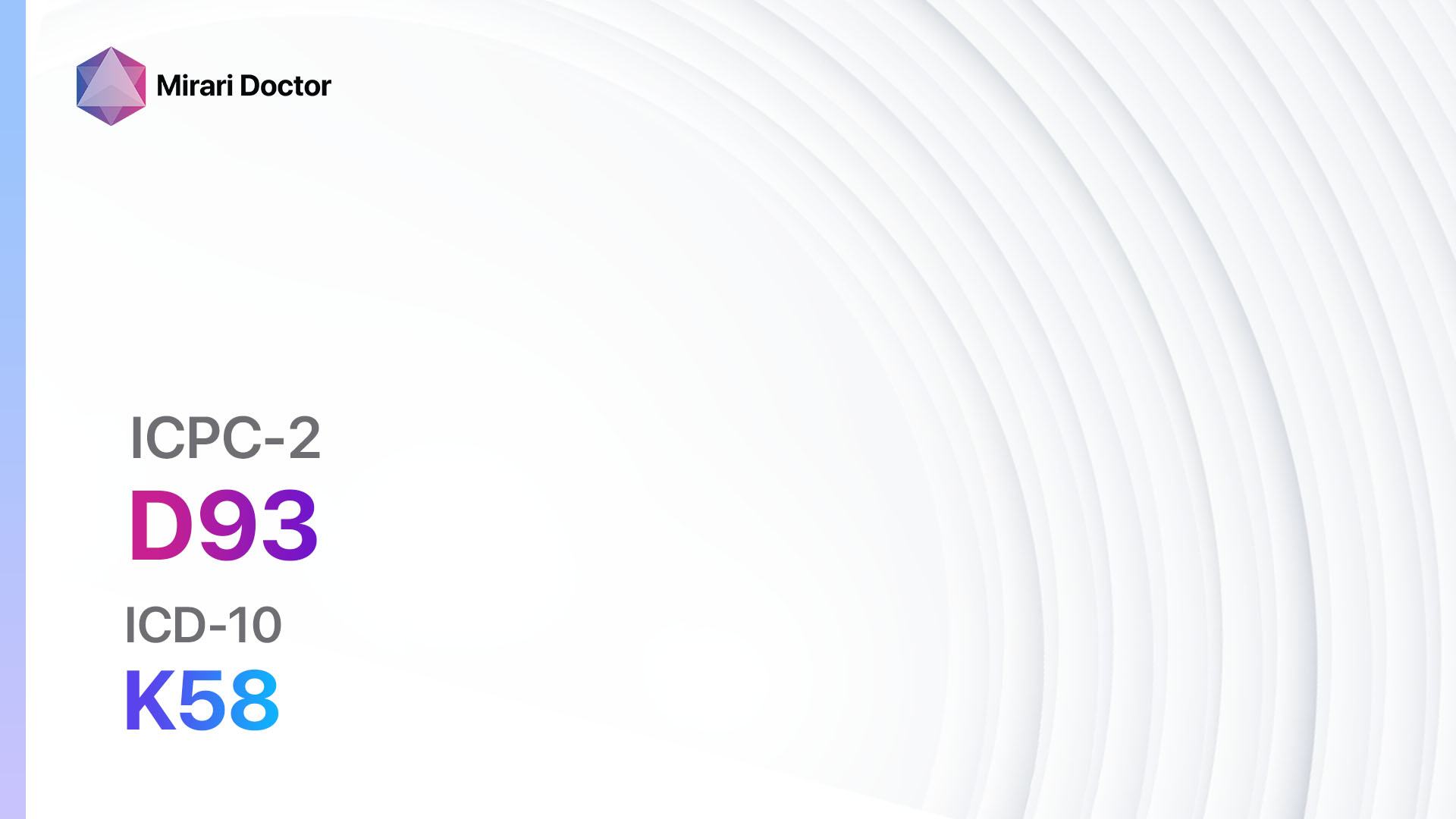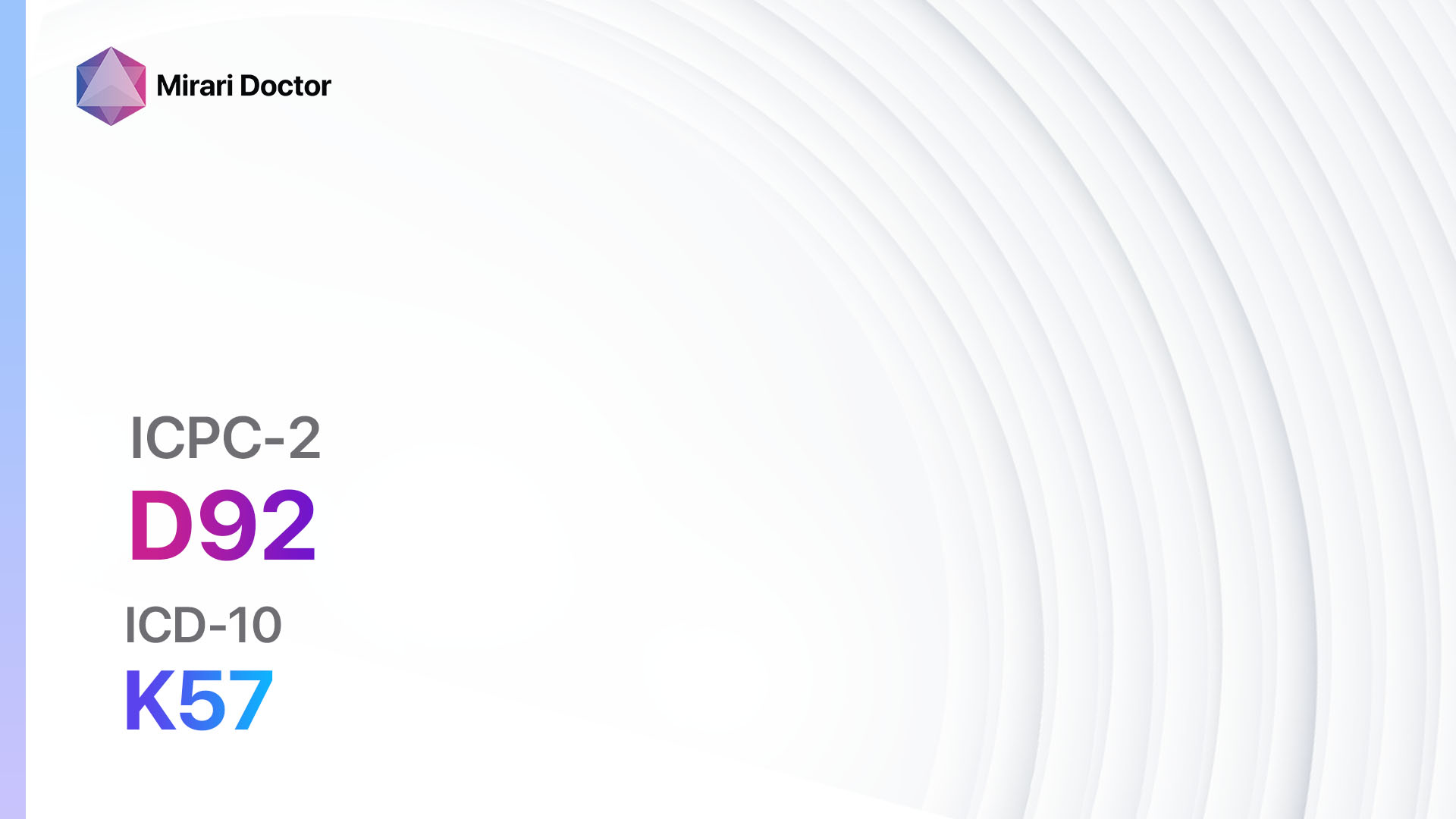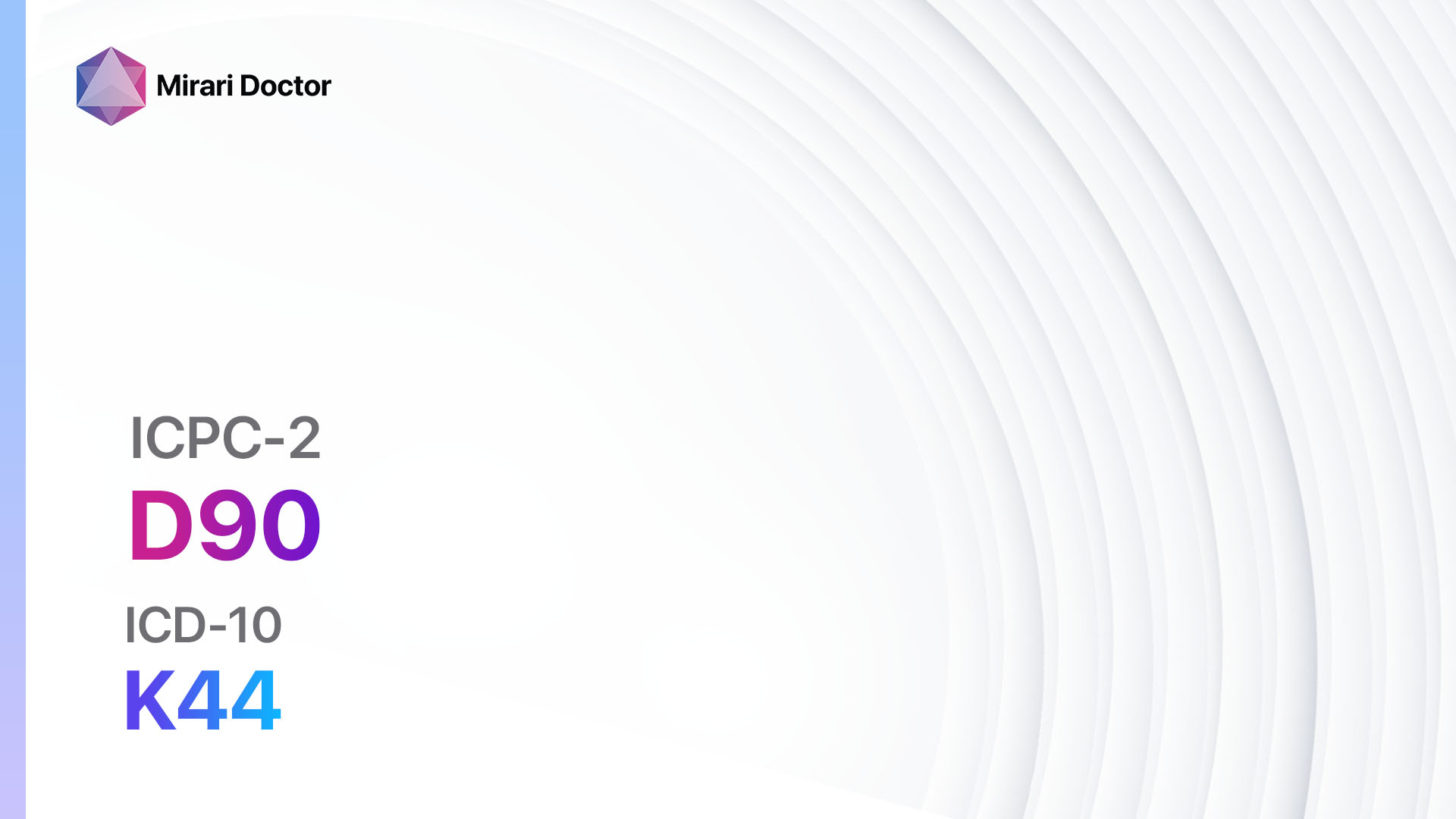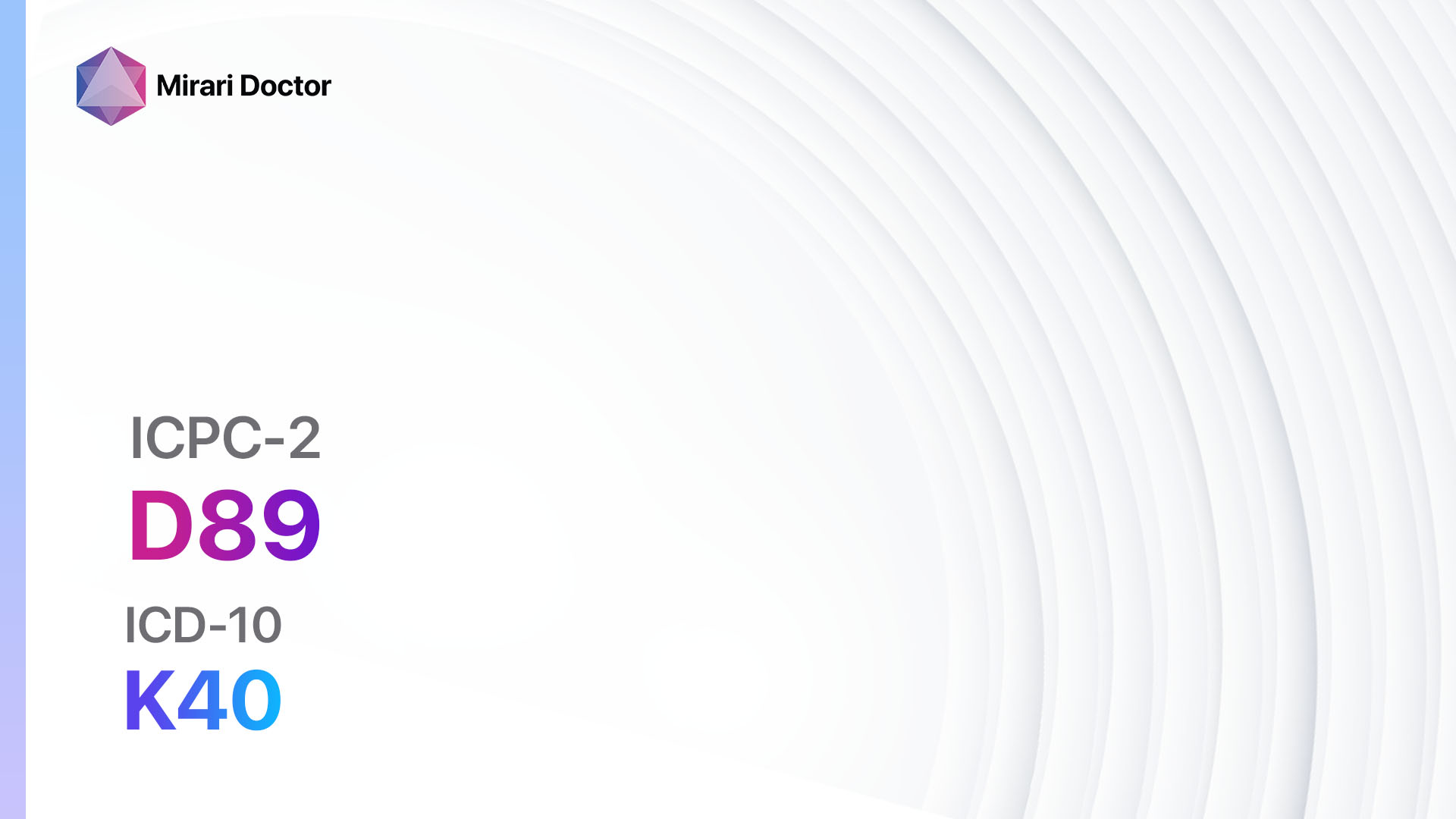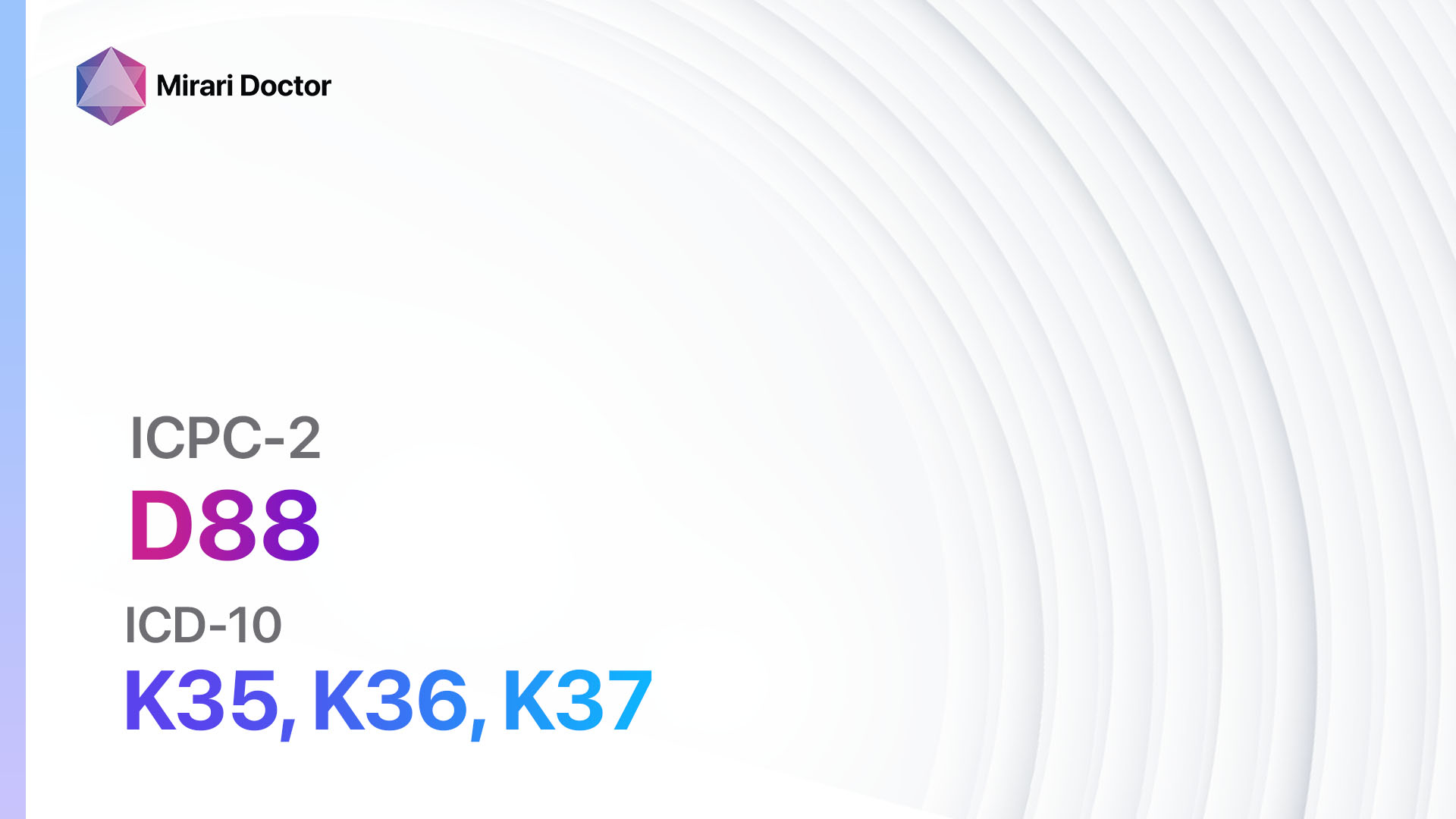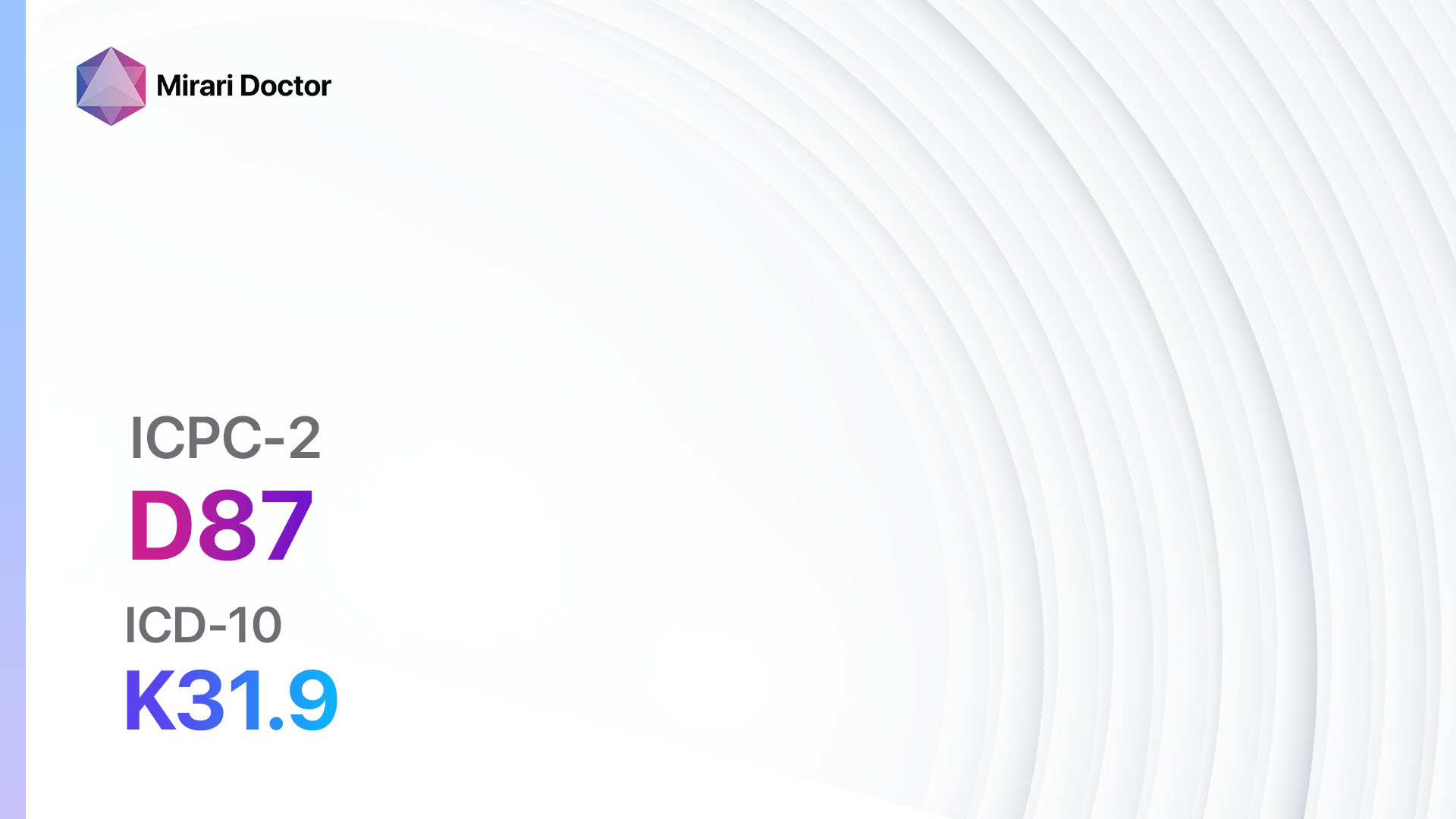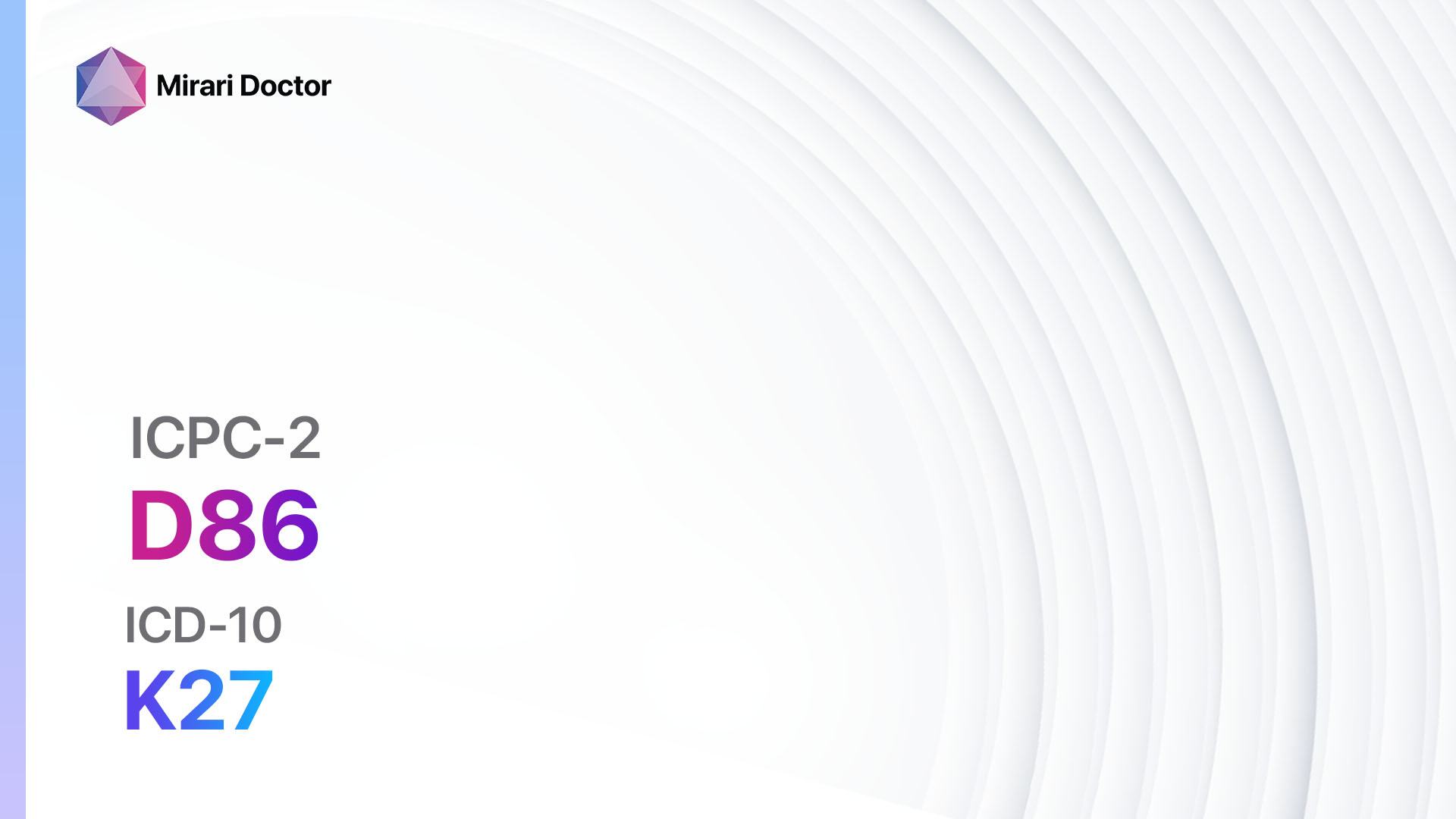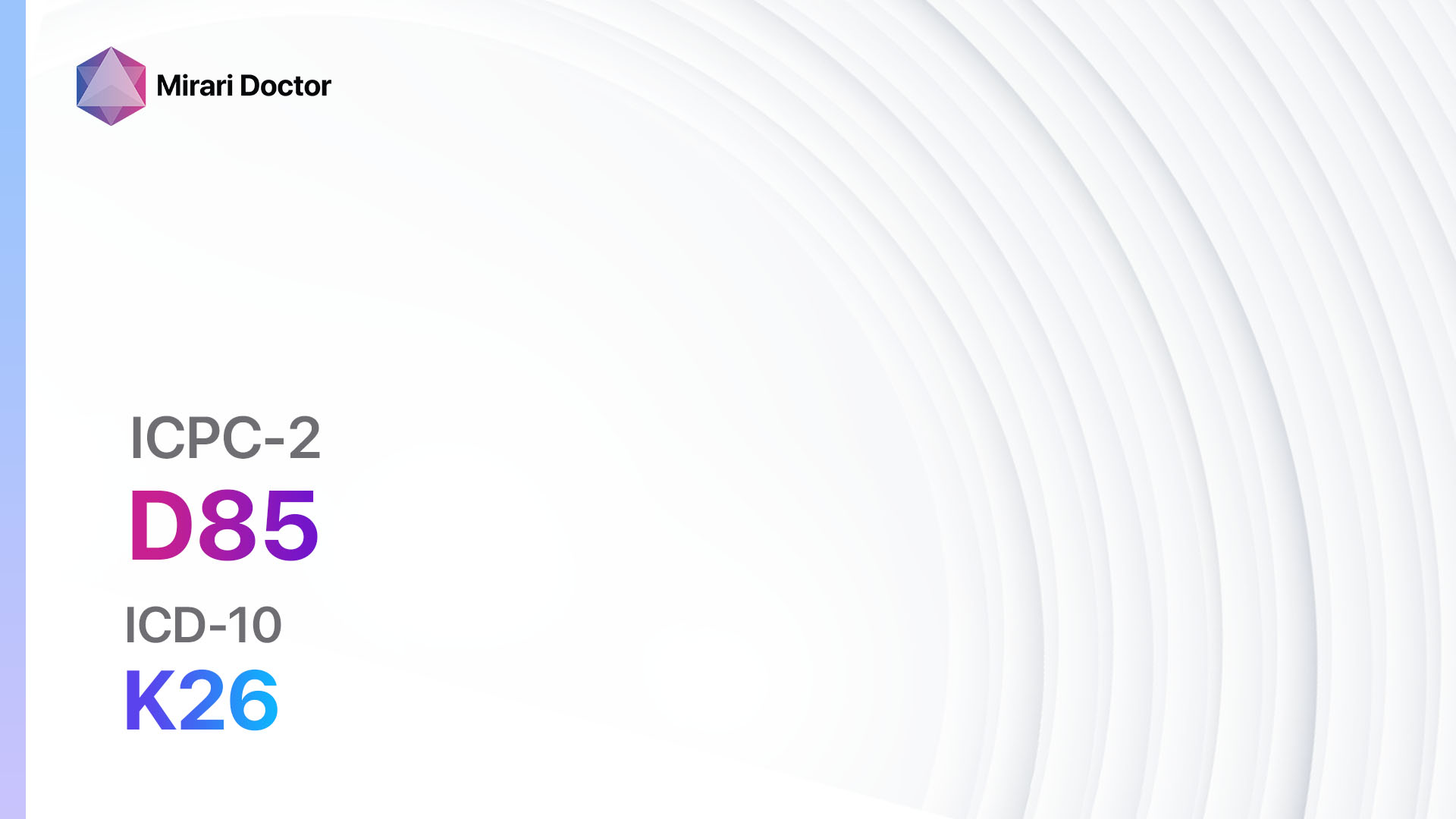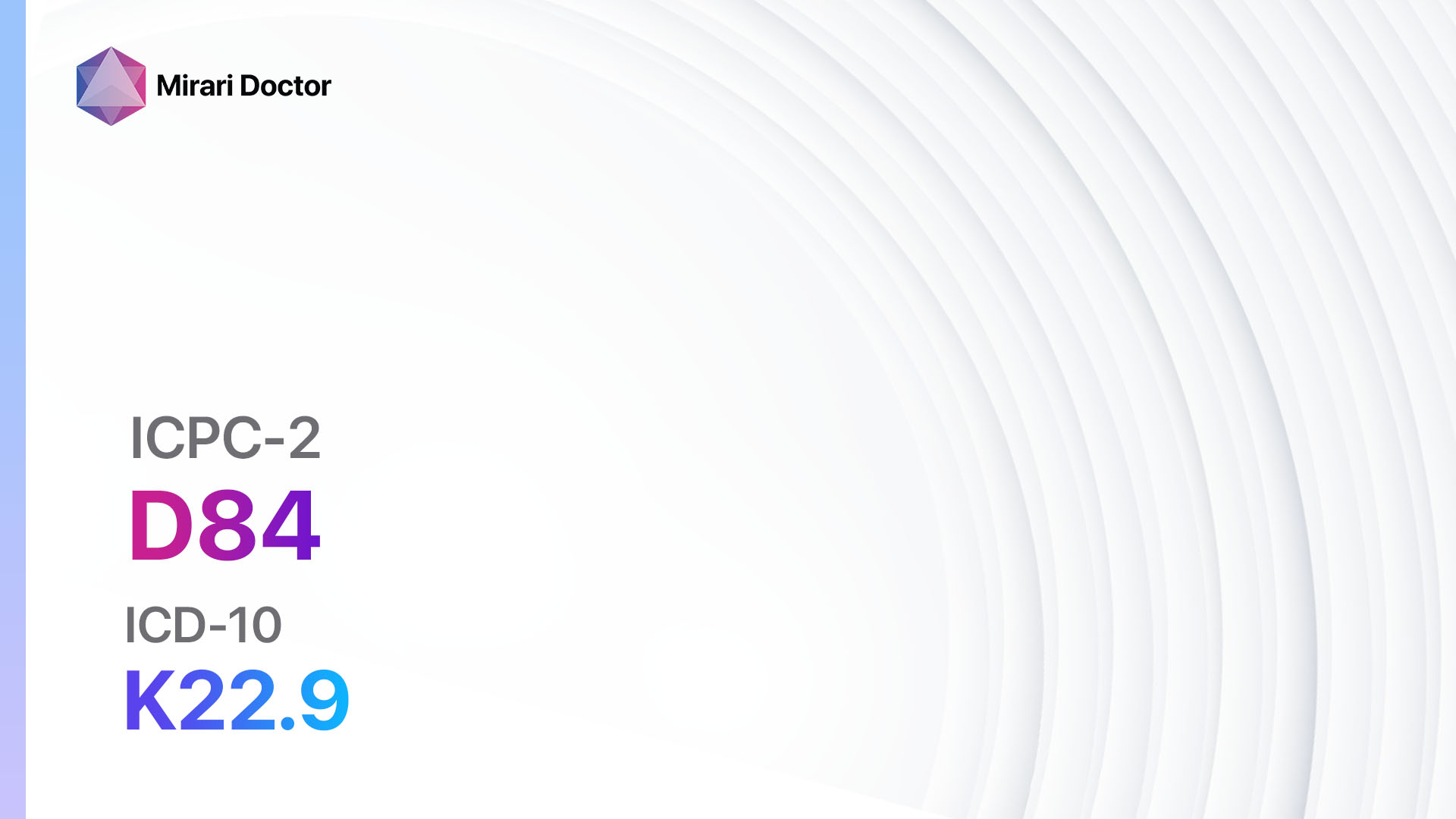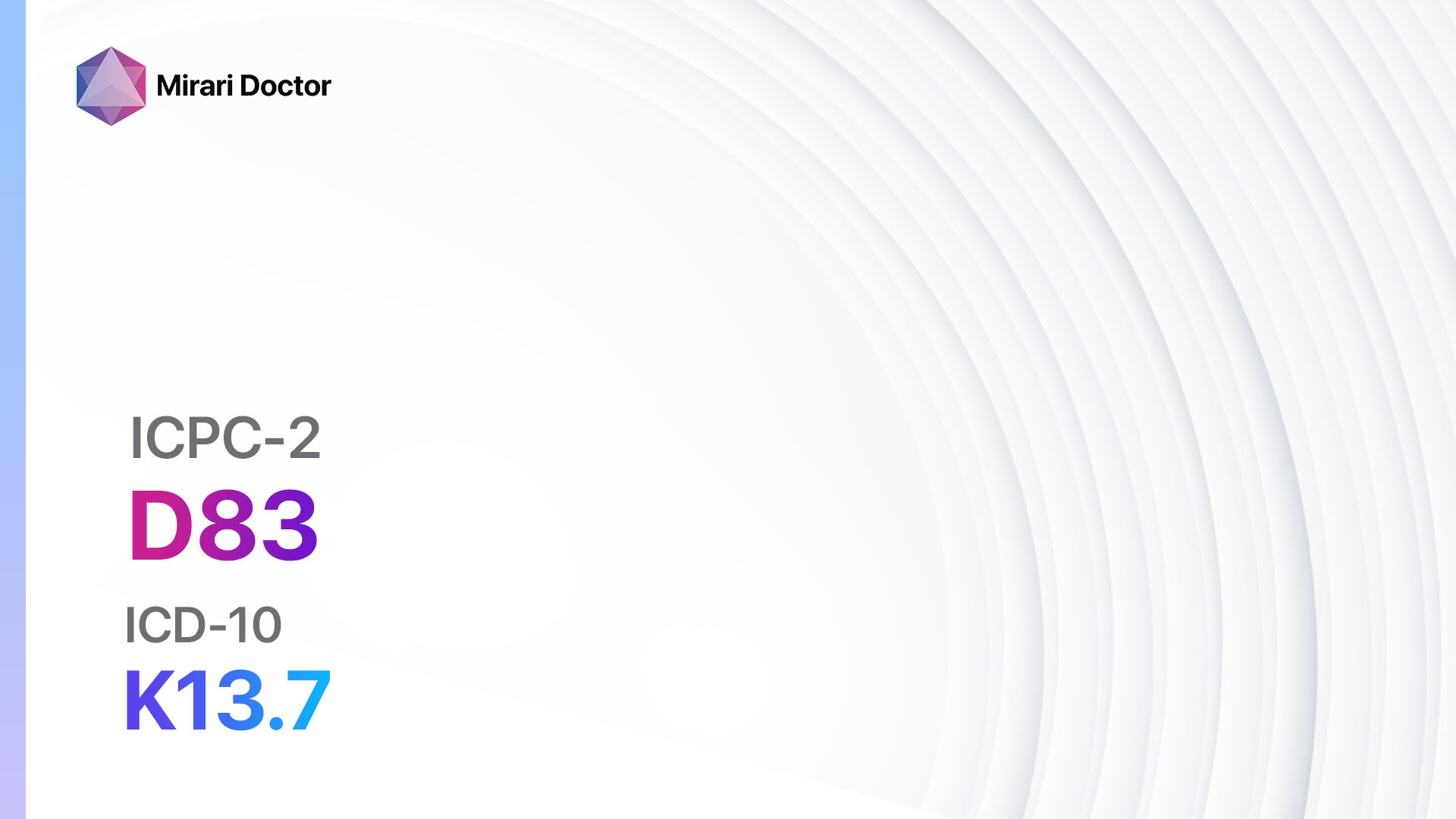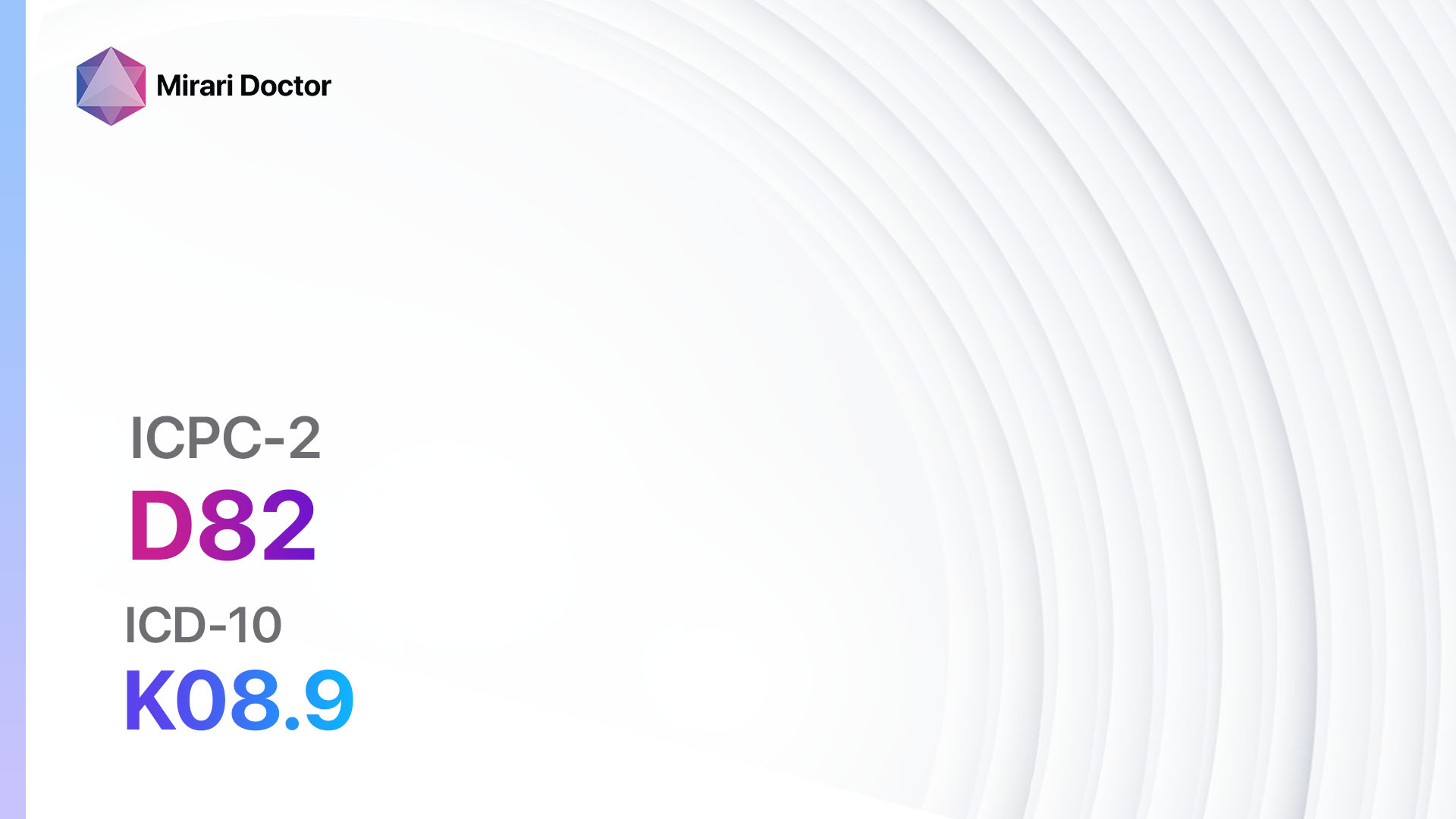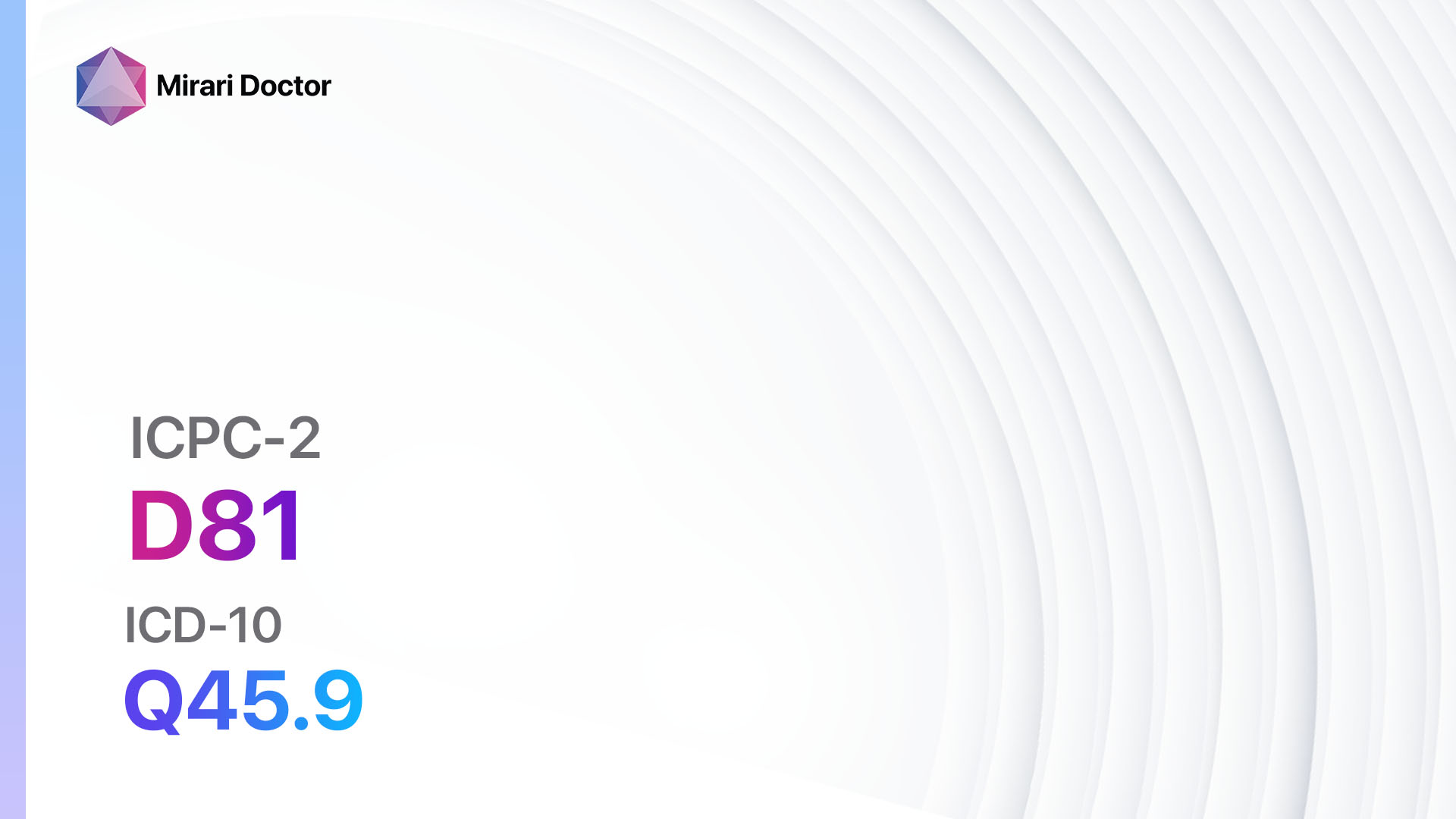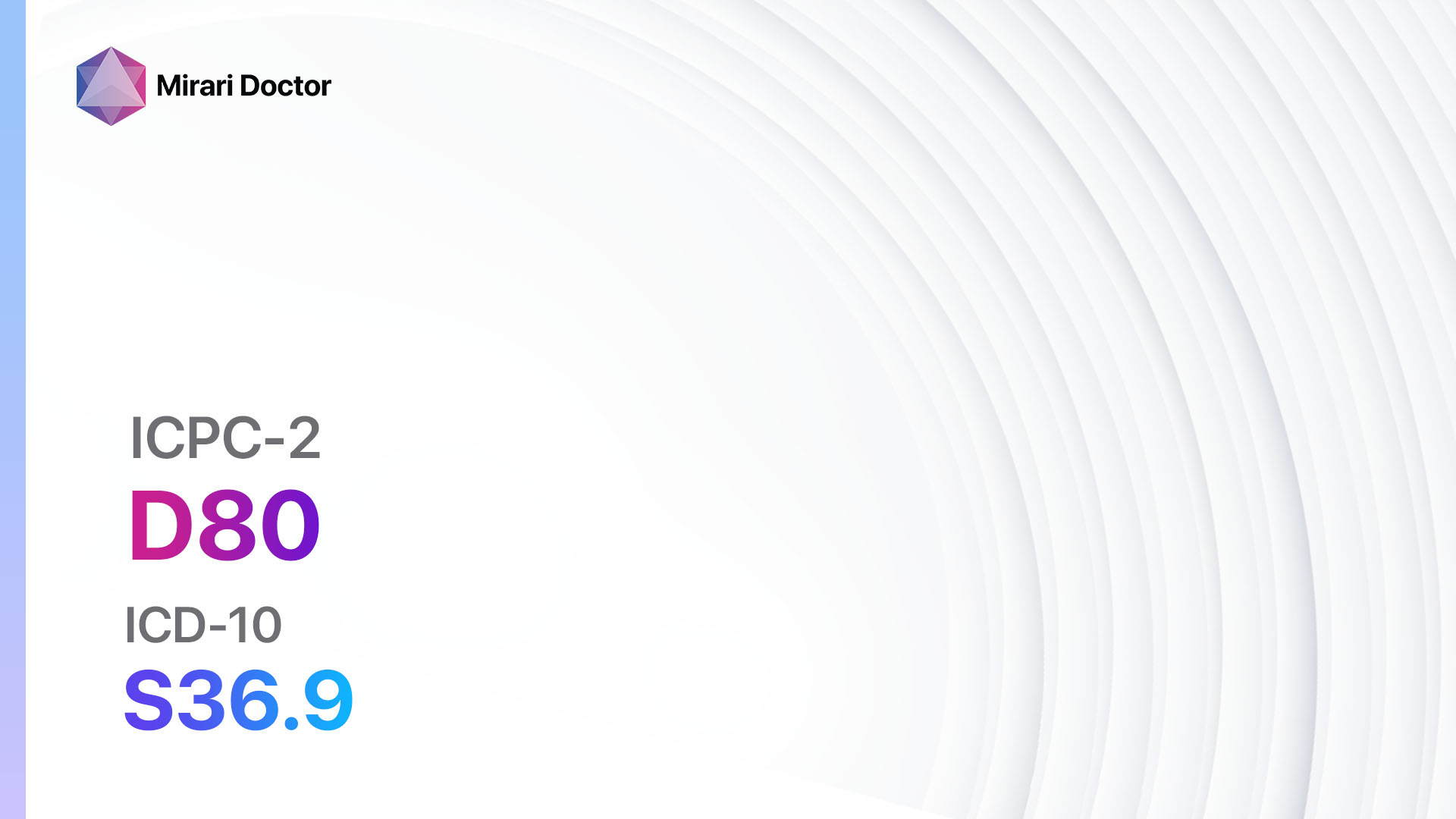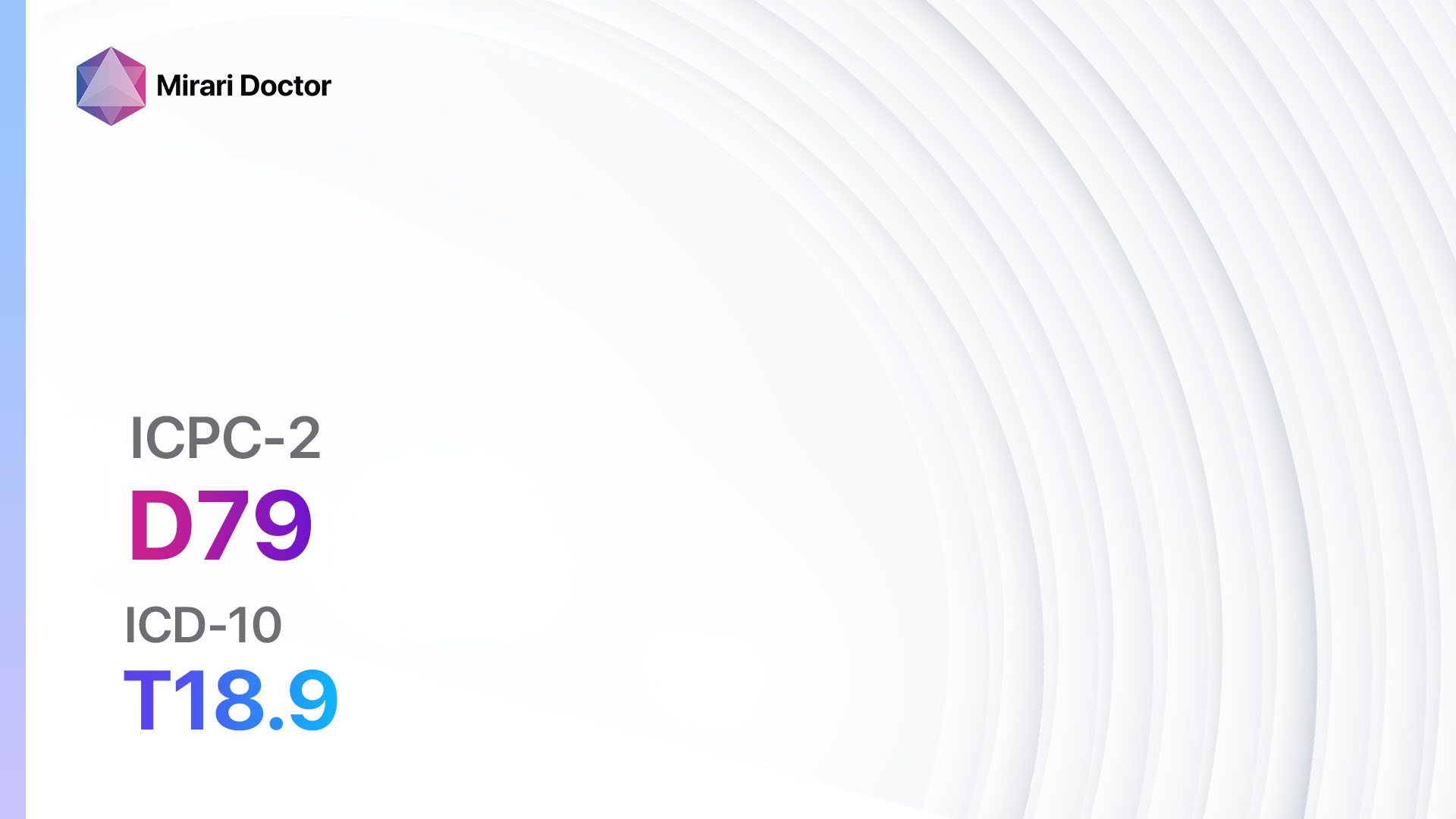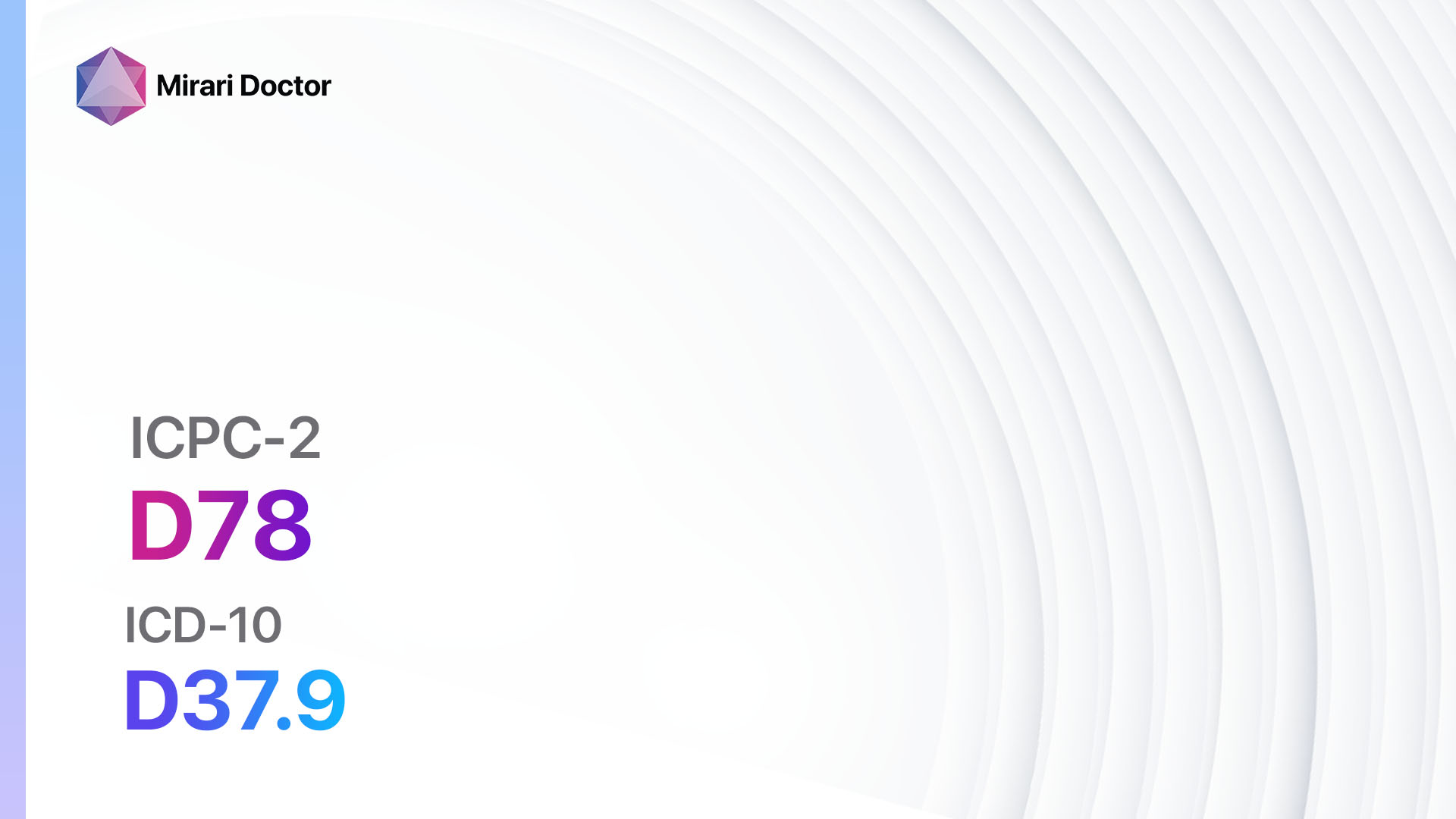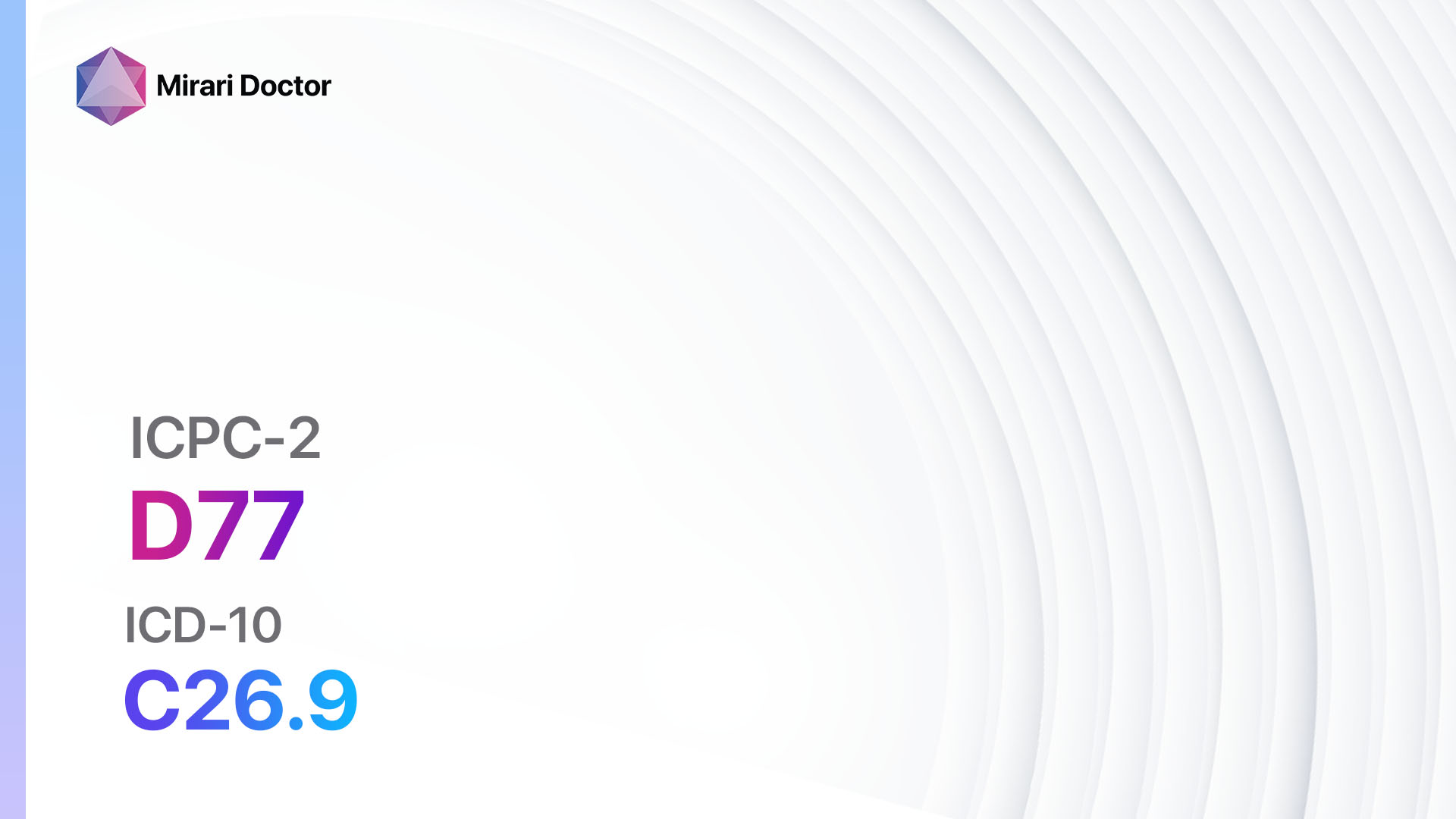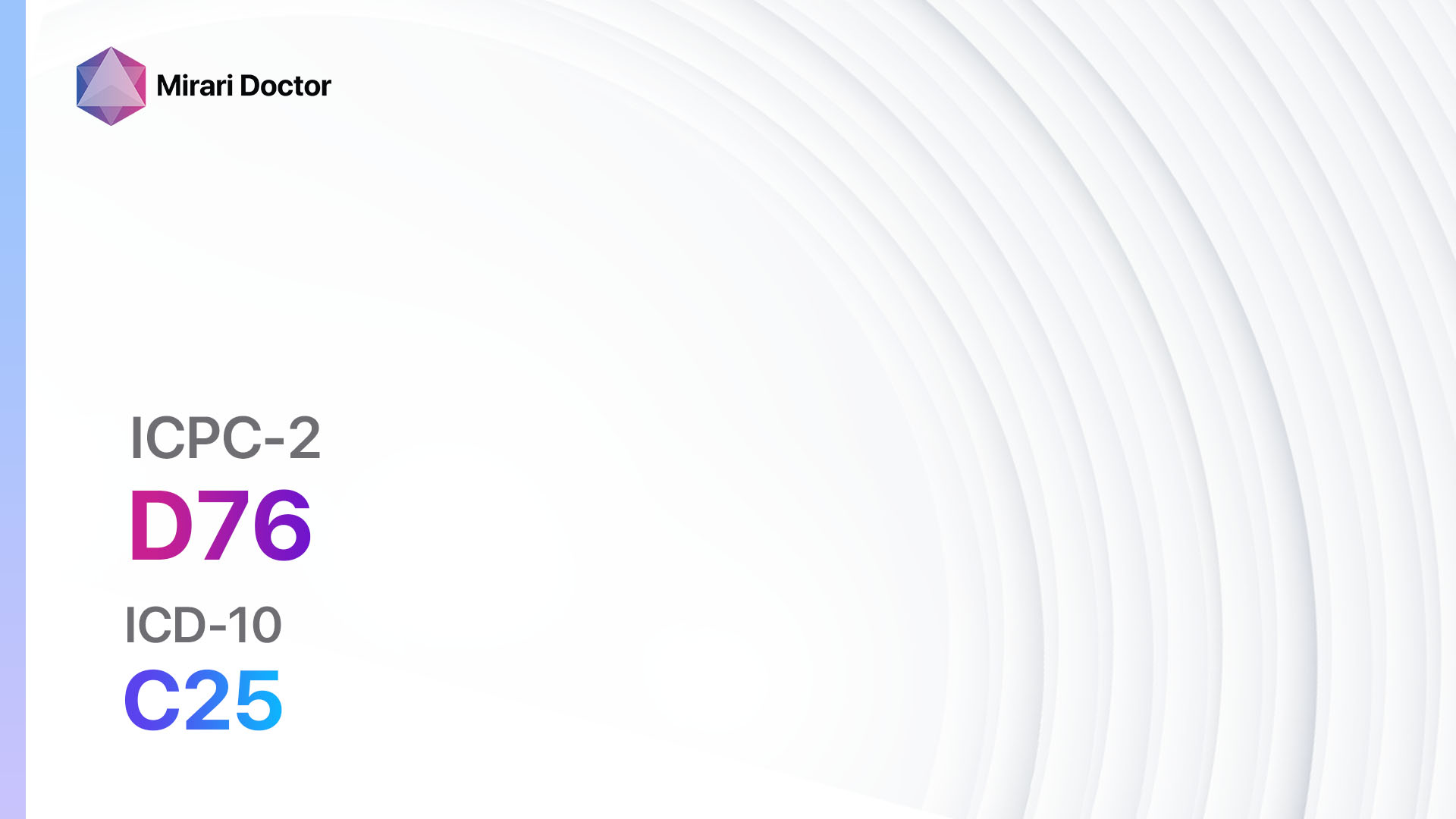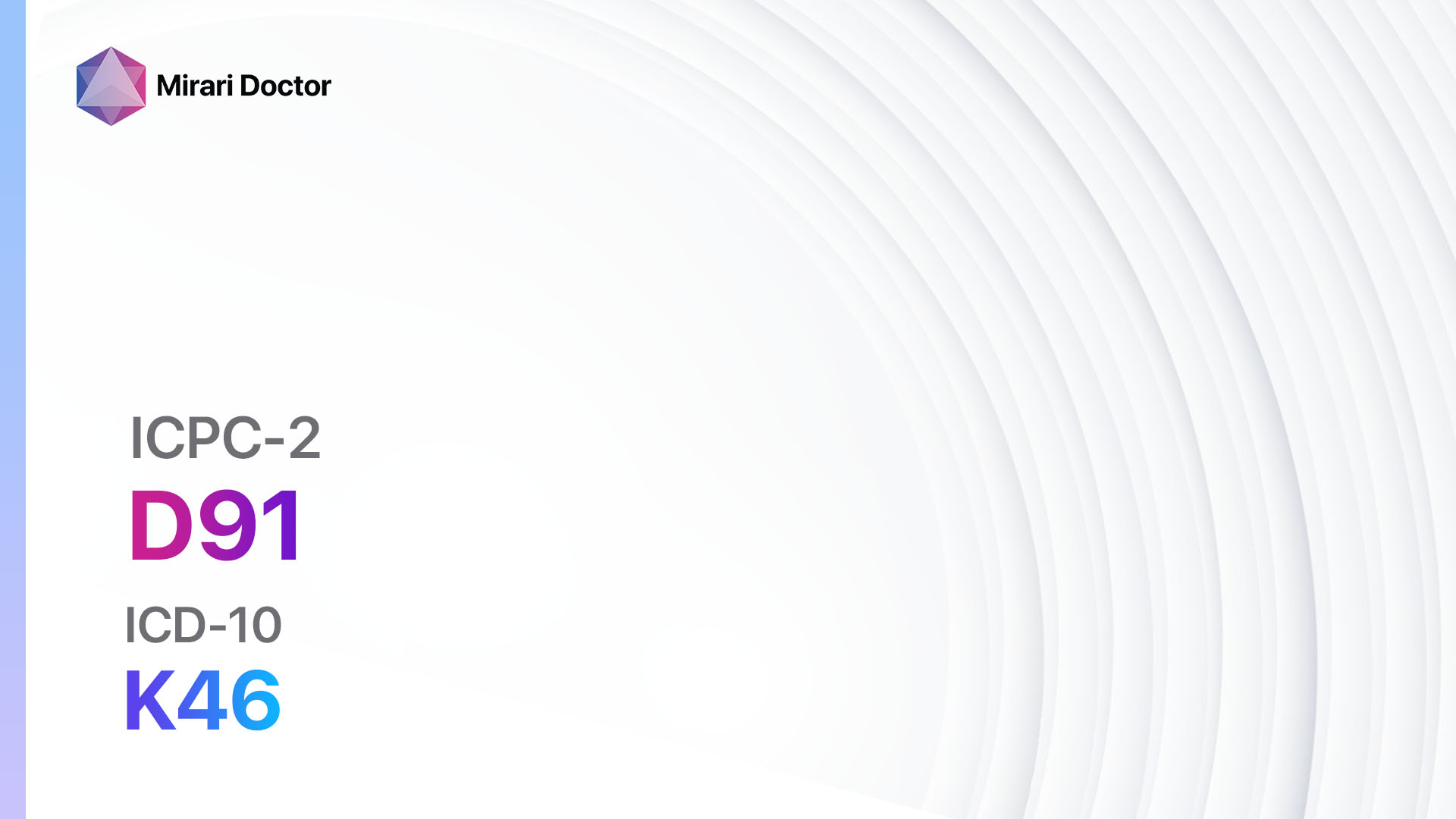
Introduction
Abdominal hernia is a condition characterized by the protrusion of an organ or tissue through a weak spot in the abdominal wall[1]. Abdominal hernias can occur in various locations, including the groin (inguinal hernia), belly button (umbilical hernia), or along a previous surgical incision (incisional hernia)[2]. This guide aims to provide a comprehensive overview of the diagnostic steps, possible interventions, and lifestyle modifications for abdominal hernia.
Codes
Symptoms
- Abdominal pain: Patients may experience discomfort or pain in the affected area[3].
- Visible bulge: A noticeable bulge or lump may be present in the abdomen or groin area[4].
- Swelling or tenderness: The affected area may be swollen or tender to the touch[5].
- Nausea or vomiting: In some cases, abdominal hernias can cause digestive symptoms such as nausea or vomiting[6].
- Difficulty with bowel movements: Hernias can sometimes lead to constipation or difficulty passing stool[7].
Causes
- Weak abdominal muscles: Weakness in the abdominal muscles can increase the risk of developing a hernia[8].
- Straining: Activities that involve heavy lifting, persistent coughing, or straining during bowel movements can contribute to the development of a hernia[9].
- Obesity: Excess weight can put additional pressure on the abdominal wall, increasing the likelihood of a hernia[10].
- Pregnancy: The increased pressure on the abdomen during pregnancy can lead to the development of a hernia.
- Previous surgery: Surgical incisions can weaken the abdominal wall, making it more susceptible to herniation.
Diagnostic Steps
Medical History
- Gather information about the patient’s symptoms, including the duration and severity of pain, presence of a visible bulge, and any associated symptoms such as nausea or difficulty with bowel movements.
- Inquire about any previous surgeries or medical conditions that may increase the risk of developing a hernia.
- Assess the patient’s lifestyle and occupation to identify any activities that may contribute to the development of a hernia.
Physical Examination
- Perform a thorough physical examination, focusing on the abdomen and groin area.
- Look for any visible bulges or lumps in the abdominal wall or groin.
- Palpate the area to assess for tenderness or swelling.
- Observe the patient’s ability to cough or strain, as this may exacerbate the hernia.
Laboratory Tests
- Blood tests: Routine blood tests may be performed to assess the patient’s overall health and rule out other potential causes of abdominal pain.
- Urinalysis: A urine test may be ordered to rule out urinary tract infections or other urinary conditions that may present with similar symptoms.
Diagnostic Imaging
- Ultrasound: This non-invasive imaging modality can help visualize the hernia and assess its size and location.
- CT scan: In some cases, a CT scan may be ordered to provide a more detailed view of the hernia and surrounding structures.
- X-ray: Although less commonly used, an X-ray may be performed to rule out other conditions that may present with similar symptoms.
Other Tests
- Endoscopy: In certain cases, an endoscopy may be performed to evaluate the gastrointestinal tract and rule out other potential causes of abdominal pain.
- Herniography: This specialized imaging procedure involves injecting contrast material into the hernia sac to better visualize its anatomy.
Follow-up and Patient Education
- Schedule a follow-up appointment to discuss the diagnostic results and determine the appropriate course of treatment.
- Provide the patient with educational materials about abdominal hernias, including information about lifestyle modifications and potential interventions.
Possible Interventions
Traditional Interventions
Medications:
Top 5 drugs for Abdominal hernia:
- Pain relievers (e.g., Acetaminophen, Ibuprofen):
- Cost: Generic versions can be $3-$10/month.
- Contraindications: Allergy to the medication, history of stomach ulcers or bleeding disorders.
- Side effects: Upset stomach, dizziness.
- Severe side effects: Liver damage, allergic reactions.
- Drug interactions: Blood thinners, other pain relievers.
- Warning: Avoid exceeding the recommended dosage.
- Antacids (e.g., Calcium carbonate, Aluminum hydroxide):
- Cost: Generic versions can be $3-$10/month.
- Contraindications: Allergy to the medication, kidney disease.
- Side effects: Constipation, diarrhea.
- Severe side effects: Kidney stones, electrolyte imbalances.
- Drug interactions: Antibiotics, iron supplements.
- Warning: Take as directed and avoid long-term use without medical supervision.
- Muscle relaxants (e.g., Cyclobenzaprine, Methocarbamol):
- Cost: Generic versions can be $10-$30/month.
- Contraindications: Allergy to the medication, history of liver disease.
- Side effects: Drowsiness, dizziness.
- Severe side effects: Seizures, irregular heartbeat.
- Drug interactions: Sedatives, antidepressants.
- Warning: Avoid alcohol and activities requiring mental alertness while taking these medications.
- Antiemetics (e.g., Ondansetron, Metoclopramide):
- Cost: Generic versions can be $10-$30/month.
- Contraindications: Allergy to the medication, history of certain heart conditions.
- Side effects: Headache, constipation.
- Severe side effects: Irregular heartbeat, muscle stiffness.
- Drug interactions: Serotonin reuptake inhibitors, certain antibiotics.
- Warning: Follow the prescribed dosage and avoid taking other medications without consulting a healthcare professional.
- Fiber supplements (e.g., Psyllium husk, Methylcellulose):
- Cost: Generic versions can be $10-$20/month.
- Contraindications: Allergy to the medication, intestinal blockage.
- Side effects: Bloating, gas.
- Severe side effects: Allergic reactions, difficulty swallowing.
- Drug interactions: Certain medications for diabetes, cholesterol-lowering drugs.
- Warning: Take with plenty of water and follow the recommended dosage.
Alternative Drugs:
- Proton pump inhibitors (e.g., Omeprazole): Used to reduce stomach acid production and alleviate symptoms of acid reflux.
- Antibiotics (e.g., Amoxicillin, Metronidazole): Prescribed in cases of hernia-related infections or complications.
- Antiemetic suppositories (e.g., Promethazine): An alternative form of antiemetic medication for patients who have difficulty swallowing pills.
- Laxatives (e.g., Polyethylene glycol): Used to relieve constipation and facilitate bowel movements.
- Antifungal creams (e.g., Clotrimazole): Prescribed for hernia-related fungal infections.
Surgical Procedures:
- Hernia repair surgery: The most common intervention for abdominal hernias involves surgically repairing the weakened abdominal wall and reinforcing it with mesh. Cost: $5,000 to $15,000.
- Laparoscopic hernia repair: A minimally invasive surgical technique that uses small incisions and a laparoscope to repair the hernia. Cost: $7,000 to $20,000.
- Open hernia repair: A traditional surgical approach that involves making a larger incision to access and repair the hernia. Cost: $6,000 to $18,000.
- Hernia truss: A non-surgical option that involves wearing a supportive device to hold the hernia in place. Cost: $50 to $100.
Alternative Interventions
- Physical therapy: Targeted exercises and stretches can help strengthen the abdominal muscles and reduce the risk of hernia recurrence. Cost: $50-$150 per session.
- Acupuncture: May help alleviate pain and promote healing. Cost: $60-$120 per session.
- Chiropractic care: Spinal adjustments and manipulations may provide relief from hernia-related pain. Cost: $50-$200 per session.
- Herbal supplements: Some herbal remedies, such as aloe vera or chamomile, may have anti-inflammatory properties that can help reduce hernia symptoms. Cost: Varies depending on the specific supplement.
- Nutritional counseling: A registered dietitian can provide guidance on dietary modifications that may help alleviate symptoms and promote healing. Cost: $100-$200 per session.
Lifestyle Interventions
- Weight loss: Losing excess weight can reduce the pressure on the abdominal wall and decrease the risk of hernia development or recurrence. Cost: Varies depending on the chosen weight loss program or method.
- Avoiding heavy lifting: Minimizing activities that involve heavy lifting can help prevent further strain on the abdominal muscles and reduce the risk of hernia recurrence. Cost: None.
- Smoking cessation: Quitting smoking can improve overall health and reduce the risk of complications during hernia repair surgery. Cost: Varies depending on the chosen smoking cessation method.
- Dietary modifications: Eating a balanced diet rich in fiber and nutrients can promote healthy digestion and reduce the risk of constipation, which can contribute to hernia symptoms. Cost: Varies depending on individual food choices.
- Regular exercise: Engaging in regular physical activity can help strengthen the abdominal muscles and improve overall fitness. Cost: Varies depending on the chosen exercise program or gym membership.
It is important to note that the cost ranges provided are approximate and may vary depending on the location and availability of the interventions. It is recommended to consult with a healthcare professional for personalized advice and cost estimates based on individual circumstances.
Mirari Cold Plasma Alternative Intervention
Understanding Mirari Cold Plasma
- Safe and Non-Invasive Treatment: Mirari Cold Plasma is a safe and non-invasive treatment option for various skin conditions. It does not require incisions, minimizing the risk of scarring, bleeding, or tissue damage.
- Efficient Extraction of Foreign Bodies: Mirari Cold Plasma facilitates the removal of foreign bodies from the skin by degrading and dissociating organic matter, allowing easier access and extraction.
- Pain Reduction and Comfort: Mirari Cold Plasma has a local analgesic effect, providing pain relief during the treatment, making it more comfortable for the patient.
- Reduced Risk of Infection: Mirari Cold Plasma has antimicrobial properties, effectively killing bacteria and reducing the risk of infection.
- Accelerated Healing and Minimal Scarring: Mirari Cold Plasma stimulates wound healing and tissue regeneration, reducing healing time and minimizing the formation of scars.
Mirari Cold Plasma Prescription
Video instructions for using Mirari Cold Plasma Device – D91 Abdominal hernia other (ICD-10:K46)
| Mild | Moderate | Severe |
| Mode setting: 1 (Infection) Location: 3 (Kidney, Liver & Spleen) Morning: 15 minutes, Evening: 15 minutes | Mode setting: 1 (Infection) Location: 3 (Kidney, Liver & Spleen) Morning: 30 minutes, Lunch: 30 minutes, Evening: 30 minutes | Mode setting: 1 (Infection) Location: 3 (Kidney, Liver & Spleen) Morning: 30 minutes, Lunch: 30 minutes, Evening: 30 minutes |
| Mode setting: 2 (Wound Healing) Location: 3 (Kidney, Liver & Spleen) Morning: 15 minutes, Evening: 15 minutes | Mode setting: 2 (Wound Healing) Location: 3 (Kidney, Liver & Spleen) Morning: 30 minutes, Lunch: 30 minutes, Evening: 30 minutes | Mode setting: 2 (Wound Healing) Location: 3 (Kidney, Liver & Spleen) Morning: 30 minutes, Lunch: 30 minutes, Evening: 30 minutes |
| Mode setting: 3 (Antiviral Therapy) Location: 2 (Prostate & Uterus) Morning: 15 minutes, Evening: 15 minutes | Mode setting: 3 (Antiviral Therapy) Location: 2 (Prostate & Uterus) Morning: 30 minutes, Lunch: 30 minutes, Evening: 30 minutes | Mode setting: 3 (Antiviral Therapy) Location: 2 (Prostate & Uterus) Morning: 30 minutes, Lunch: 30 minutes, Evening: 30 minutes |
| Mode setting: 7 (Immunotherapy) Location: 1 (Sacrum) Morning: 15 minutes, Evening: 15 minutes | Mode setting: 7 (Immunotherapy) Location: 1 (Sacrum) Morning: 30 minutes, Lunch: 30 minutes, Evening: 30 minutes | Mode setting: 7 (Immunotherapy) Location: 1 (Sacrum) Morning: 30 minutes, Lunch: 30 minutes, Evening: 30 minutes |
| Total Morning: 60 minutes approx. $10 USD, Evening: 60 minutes approx. $10 USD | Total Morning: 120 minutes approx. $20 USD, Lunch: 120 minutes approx. $20 USD, Evening: 120 minutes approx. $20 USD, | Total Morning: 120 minutes approx. $20 USD, Lunch: 120 minutes approx. $20 USD, Evening: 120 minutes approx. $20 USD, |
| Usual treatment for 7-60 days approx. $140 USD – $1200 USD | Usual treatment for 6-8 weeks approx. $2,520USD – $3,360 USD | Usual treatment for 3-6 months approx. $5,400 USD – $10,800 USD |
 |
|
Use the Mirari Cold Plasma device to treat Abdominal hernia other effectively.
WARNING: MIRARI COLD PLASMA IS DESIGNED FOR THE HUMAN BODY WITHOUT ANY ARTIFICIAL OR THIRD PARTY PRODUCTS. USE OF OTHER PRODUCTS IN COMBINATION WITH MIRARI COLD PLASMA MAY CAUSE UNPREDICTABLE EFFECTS, HARM OR INJURY. PLEASE CONSULT A MEDICAL PROFESSIONAL BEFORE COMBINING ANY OTHER PRODUCTS WITH USE OF MIRARI.
Step 1: Cleanse the Skin
- Start by cleaning the affected area of the skin with a gentle cleanser or mild soap and water. Gently pat the area dry with a clean towel.
Step 2: Prepare the Mirari Cold Plasma device
- Ensure that the Mirari Cold Plasma device is fully charged or has fresh batteries as per the manufacturer’s instructions. Make sure the device is clean and in good working condition.
- Switch on the Mirari device using the power button or by following the specific instructions provided with the device.
- Some Mirari devices may have adjustable settings for intensity or treatment duration. Follow the manufacturer’s instructions to select the appropriate settings based on your needs and the recommended guidelines.
Step 3: Apply the Device
- Place the Mirari device in direct contact with the affected area of the skin. Gently glide or hold the device over the skin surface, ensuring even coverage of the area experiencing.
- Slowly move the Mirari device in a circular motion or follow a specific pattern as indicated in the user manual. This helps ensure thorough treatment coverage.
Step 4: Monitor and Assess:
- Keep track of your progress and evaluate the effectiveness of the Mirari device in managing your Abdominal hernia other. If you have any concerns or notice any adverse reactions, consult with your health care professional.
Note
This guide is for informational purposes only and should not replace the advice of a medical professional. Always consult with your healthcare provider or a qualified medical professional for personal advice, diagnosis, or treatment. Do not solely rely on the information presented here for decisions about your health. Use of this information is at your own risk. The authors of this guide, nor any associated entities or platforms, are not responsible for any potential adverse effects or outcomes based on the content.
Mirari Cold Plasma System Disclaimer
- Purpose: The Mirari Cold Plasma System is a Class 2 medical device designed for use by trained healthcare professionals. It is registered for use in Thailand and Vietnam. It is not intended for use outside of these locations.
- Informational Use: The content and information provided with the device are for educational and informational purposes only. They are not a substitute for professional medical advice or care.
- Variable Outcomes: While the device is approved for specific uses, individual outcomes can differ. We do not assert or guarantee specific medical outcomes.
- Consultation: Prior to utilizing the device or making decisions based on its content, it is essential to consult with a Certified Mirari Tele-Therapist and your medical healthcare provider regarding specific protocols.
- Liability: By using this device, users are acknowledging and accepting all potential risks. Neither the manufacturer nor the distributor will be held accountable for any adverse reactions, injuries, or damages stemming from its use.
- Geographical Availability: This device has received approval for designated purposes by the Thai and Vietnam FDA. As of now, outside of Thailand and Vietnam, the Mirari Cold Plasma System is not available for purchase or use.
References
- Lassandro, F., Iasiello, F., Pizza, N. L., Valente, T., Stefano, M. L. G. D., Grassi, R., & Muto, R. (2011). Abdominal hernias: Radiological features. World Journal of Gastrointestinal Endoscopy, 3(6), 110-117.//doi.org/10.4253/wjge.v3.i6.110
- Brooks, D. C. (2021). Overview of abdominal wall hernias in adults. In K. A. Collins (Ed.), UpToDate. UpToDate.//www.uptodate.com/contents/overview-of-abdominal-wall-hernias-in-adults
- Bhangu, A., Fitzgerald, J. E., Singh, P., Battersby, N., Marriott, P., & Pinkney, T. (2013). Systematic review and meta-analysis of prophylactic mesh placement for prevention of incisional hernia following midline laparotomy. Hernia, 17(4), 445-455.//doi.org/10.1007/s10029-013-1119-2
- Dabbas, N., Adams, K., Pearson, K., & Royle, G. (2011). Frequency of abdominal wall hernias: Is classical teaching out of date? JRSM Short Reports, 2(1), 1-6.//doi.org/10.1258/shorts.2010.010071
- Fitzgibbons, R. J., & Forse, R. A. (2015). Groin hernias in adults. New England Journal of Medicine, 372(8), 756-763.//doi.org/10.1056/nejmcp1404068
- Kulacoglu, H. (2011). Current options in inguinal hernia repair in adult patients. Hippokratia, 15(3), 223-231.//www.ncbi.nlm.nih.gov/pmc/articles/PMC3306025/
- Muysoms, F. E., Miserez, M., Berrevoet, F., Campanelli, G., Champault, G. G., Chelala, E., Dietz, U. A., Eker, H. H., El Nakadi, I., Hauters, P., Hidalgo Pascual, M., Hoeferlin, A., Klinge, U., Montgomery, A., Simmermacher, R. K. J., Simons, M. P., Śmietański, M., Sommeling, C., Tollens, T., . . . Kingsnorth, A. (2009). Classification of primary and incisional abdominal wall hernias. Hernia, 13(4), 407-414.//doi.org/10.1007/s10029-009-0518-x
- Öberg, S., Andresen, K., & Rosenberg, J. (2017). Etiology of inguinal hernias: A comprehensive review. Frontiers in Surgery, 4, 52.//doi.org/10.3389/fsurg.2017.00052
- Ruhl, C. E., & Everhart, J. E. (2007). Risk factors for inguinal hernia among adults in the US population. American Journal of Epidemiology, 165(10), 1154-1161.//doi.org/10.1093/aje/kwm011
- Lau, B., Kim, H., Haigh, P. I., & Tejirian, T. (2012). Obesity increases the odds of acquiring and incarcerating noninguinal abdominal wall hernias. The American Surgeon, 78(10), 1118-1121.//pubmed.ncbi.nlm.nih.gov/23025950/
Related articles
Made in USA


